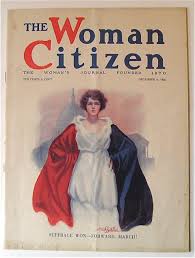How was the Texas campaign for votes for women reported in the news media of the era?
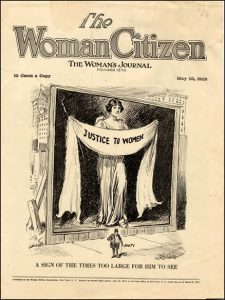
On the left: The Woman Citizen, a women’s rights weekly that existed from 1870 to 1931, was an influential periodical dedicated to reporting the suffrage movement. Image from the Austin Public Library.
In the run up to ratification and the adoption of the 19th Amendment, Texas newspapers and other publications published both pro-suffrage and anti-suffrage content, including editorials, letters to the editor, notices of suffrage events, political cartoons, and more:
March 5, 1915—“Woman’s suffrage is coming and every well informed man knows it, whether he will admit it or not.” – John E. Davis, editor of the Texas Mesquiter (today called The Mesquite News), currently one of the oldest operating newspapers in Texas.
March 2, 1917—“Colonel H. B. Moore of Texas City was in Houston for an hour yesterday to address the woman’s suffrage school, which is teaching our ladies the intricacies of politics.” —from The Houston Post, which operated from 1880 to 1995.
May 23, 1917—“On May 7, Mrs. Fitzgerald addressed the [FBLS] Club about suffrage. ‘What Is Suffrage?’ was her subject, and the talk was very interesting.”—from the Rice Thresher, the student newspaper for Rice University.
July 7, 1917— “Clara Snell Wolf, a prominent woman suffrage worker of Austin, spoke to a good crowd at the tent on the school grounds Friday night, taking for her subject ‘Nationwide Suffrage And the War Measure.’ She made a splendid talk.” —from the Brenham Daily Banner Press (now the Brenham Banner Press).
January 24, 1919—“Notice To Ladies: The amendment now pending before the Texas Legislature provides that an amendment granting the franchise or the privilege of the vote to the women of Texas is to be submitted to the voters of Texas on May 24th next. If this amendment is adopted at that election, any lady who has paid her poll tax for this year may vote in any following election. But if she has not paid her poll tax, she CANNOT VOTE in any election until after the first of February 1920. Therefore I urge that all ladies who desire to vote at any election that might be held after next May (providing that the amendment is adopted by the people) pay their poll tax at once…” —Public notice from Texas Representative J.O. Smith in the Bastrop Advertiser, now part of the Austin American-Statesman.
Articles in favor of suffrage emphasized women’s value as taxpayers, workers, and mothers, while anti-suffrage content linked votes for women to the decline of the home, the spread of socialism, and the inevitable suffrage of other “undesirable” groups.
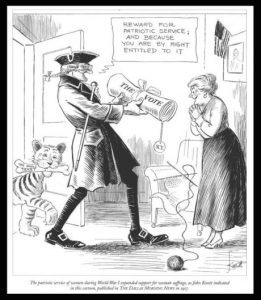
On the left: 1917 Pro-suffrage political cartoon in the Dallas Morning News that positioned suffrage as a just reward for women’s efforts during World War I. Image from The Clio (theclio.com)
This newspaper item from The Weatherford Daily Herald was low key its announcement of the passage of the historic Texas primary suffrage bill, simply noting it as one of the items passed during the recent legislative session:
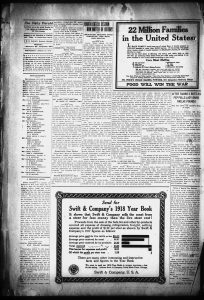
On the left: Image from The Portal to Texas History Texas Digital Newspaper Program
Headlines announcing the adoption of the 19th Amendment were far more dramatic:
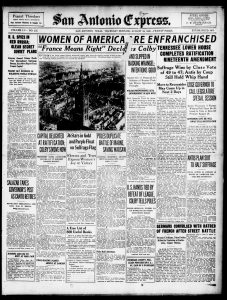
On the left: “Women of America Are Enfranchised”. Image from The Portal to Texas History Texas Digital Newspaper Program.
Additional Learning:
“Women’s Suffrage and The Media” — a database and resource site created by members of the American Journalism Historians Association.

